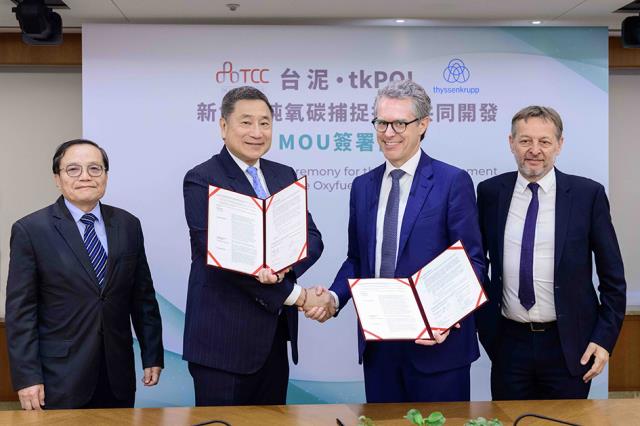Taiwan Cement Corp (TCC), Taipei, and thyssenkrupp Polysius, via its regional headquarter Asia-Pacific office agreed to construct and commission a separate oxyfuel calciner at the cement producer's Hoping cement plant with a compact footprint.
A Memorandum of Understanding (MoU) was signed in Taipei, Taiwan, for a pilot plant that will be integrated into the existing Hoping production line. In a first step, TCC will commission thyssenkrupp Polysius with the engineering of the plant.
Pablo Hofelich, CEO of thyssenkrupp Polysius, emphasises: "Reducing CO2 emissions incement production is one of the most important challenges facing the industry today. We arevery pleased that we can support Taiwan Cement on this challenging path with our polysius®oxyfuel technology. Together we will make this significant step and lighthouse projecttowards more sustainable cement production a success."
The basic principle of oxyfuel technology is to capture CO2 from the exhaust gases of cementfactories and prevent it from being released into the atmosphere. To efficientlycapture the CO2 emissions, the exhaust gas components must be modified. This is achieved by using pure oxygen instead of combustion air. In this way, the exhaust gas consists mainly of CO2. The captured CO2 can either be stored or used as feedstock to other industries.

From left to right: Ker-Fu Lu, senior VP Taiwan Cement, Nelson A Chang, CEO Taiwan Cement,
Pablo Hofelich, CEO thyssenkrupp Polysius, and Luc Rudowski, head of innovation thyssenkrupp Polysius

Hoping Cement plant will incorporate a thysenkrupp polysius oxyfuel system for carbon capture
